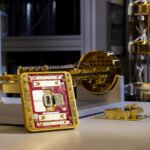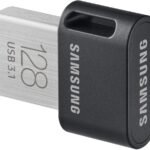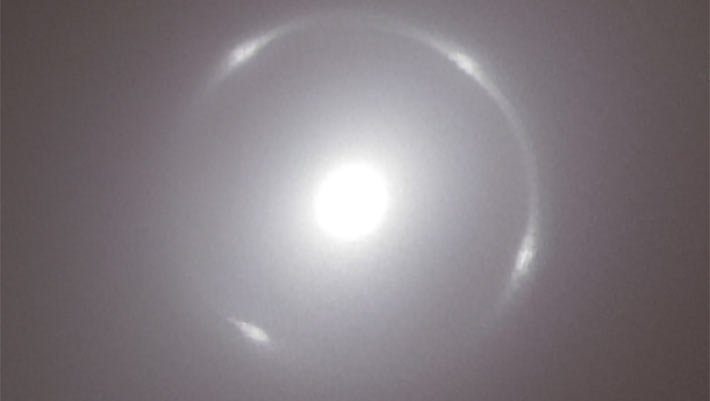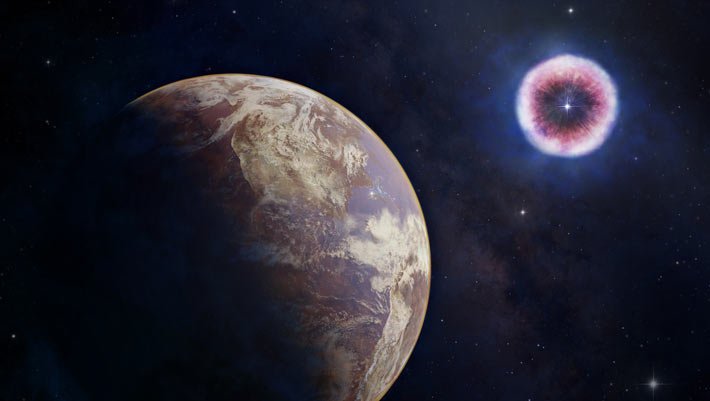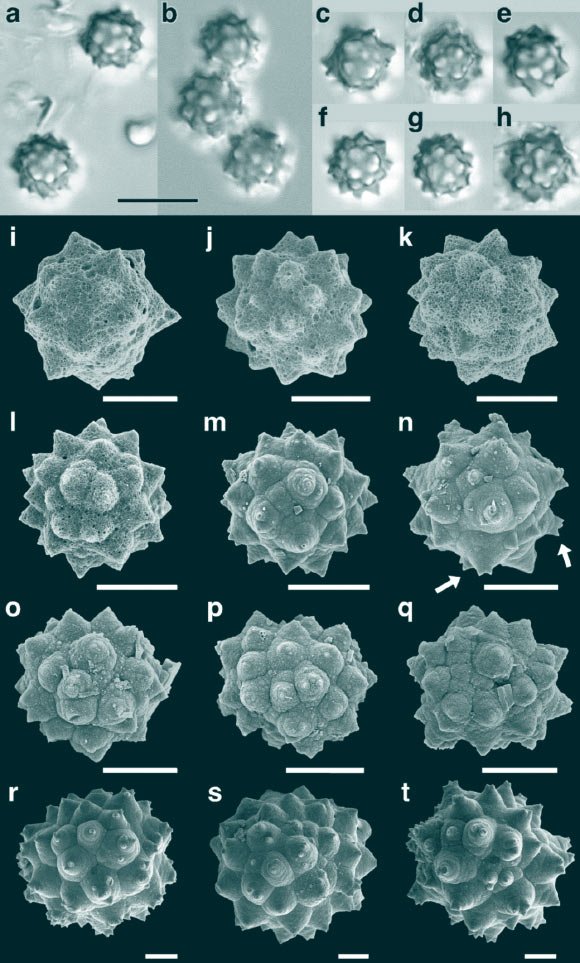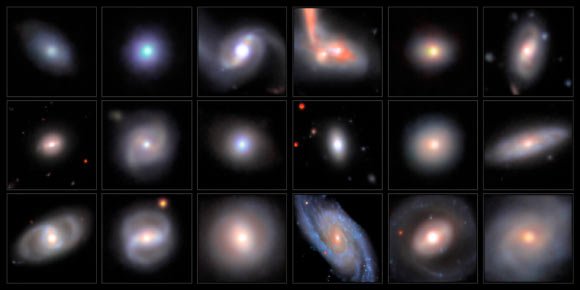An Einstein ring (also known as an Einstein-Chwolson ring or Chwolson ring) is created as the light from distant objects, like galaxies, pass by an extremely large mass, like a galaxy cluster or a massive galaxy.

Close-up of the Einstein ring around NGC 6505. Image credit: ESA / Euclid / Euclid Consortium / NASA / J.-C. Cuillandre / G. Anselmi / T. Li.
This is the first strong gravitational lens discovered in Euclid and the first in an NGC object from any survey.
In galaxy-galaxy strong gravitational lensing, the light from a distant source galaxy is distorted and magnified by the gravitational field of a foreground lens galaxy, such that multiple images of the source galaxy are formed.
When the source is resolved, that is, not point-like, and close to the projected center of the lens in the source plane a so-called Einstein ring is formed.
Both Einstein rings and lensed sources have tremendous scientific value and have been used in a wide variety of applications.
“An Einstein ring is an example of strong gravitational lensing,” said Dr. Conor O’Riordan, an astronomer at the Max Planck Institute for Astrophysics.
“All strong lenses are special, because they’re so rare, and they’re incredibly useful scientifically.”
“This one is particularly special, because it’s so close to Earth and the alignment makes it very beautiful.”

The ring of light surrounding the center of NGC 6505, captured by ESA’s Euclid telescope, is a stunning example of an Einstein ring. Image credit: ESA / Euclid / Euclid Consortium / NASA / J.-C. Cuillandre / G. Anselmi / T. Li.
Using deep imaging data from the Visible Camera (VIS) and Near-Infrared Spectrometer and Photometer (NISP) instruments onboard ESA’s Euclid spacecraft, as well as spectroscopic data from the Keck Cosmic Web Imager (KCWI) at W.M. Keck Observatory, the astronomers discovered an Einstein ring around the center of NGC 6505, an elliptical galaxy around 590 million light-years from Earth.
The ring around the foreground NGC 6505 is made up of light from a farther out bright galaxy.
The background galaxy is 4.42 billion light-years away, and its light has been distorted by gravity on its way to us.
“I find it very intriguing that this ring was observed within a well-known galaxy, which was first discovered in 1884,” said Dr. Valeria Pettorino, ESA Euclid project scientist.
“The galaxy has been known to astronomers for a very long time. And yet this ring was never observed before.”
“This demonstrates how powerful Euclid is, finding new things even in places we thought we knew well.”
“This discovery is very encouraging for the future of the Euclid mission and demonstrates its fantastic capabilities.”
The discovery of NGC 6505’s Einstein ring is reported in a paper published in the journal Astronomy & Astrophysics.
_____
C.M. O’Riordan et al. 2025. Euclid: A complete Einstein ring in NGC 6505. A&A 694, A145; doi: 10.1051/0004-6361/202453014


